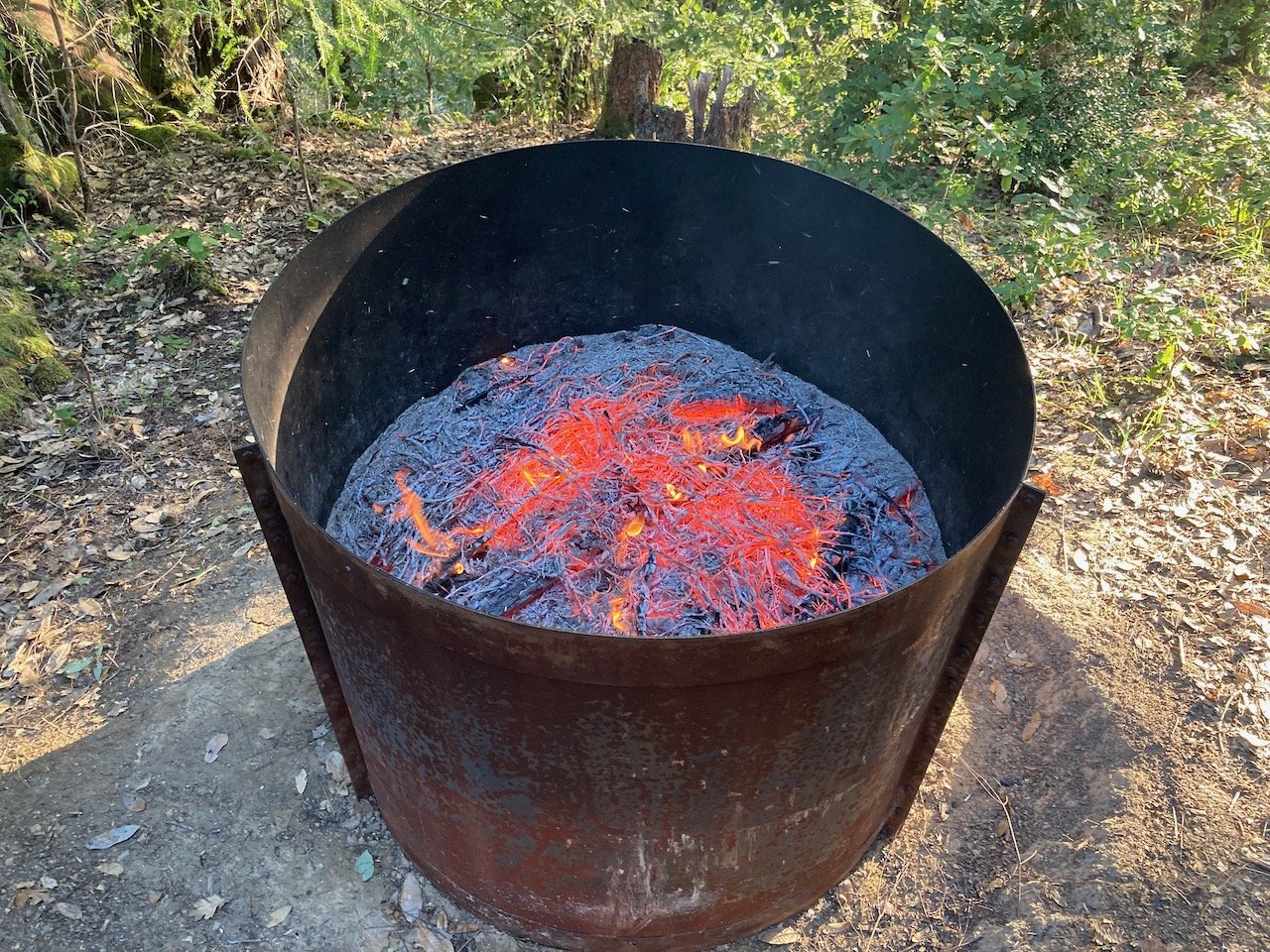On this website, we’re focused on making biochar from woody biomass and using it as a soil amendment. But at some point, the question arises about what else pyrolysis can be made to do. Other applications are just as time-honored, and some are under development.
To make biochar, we make a fire with biomass. Inside the fire, heat is breaking down the biomass into gases and a solid residue. The flame is the gases burning, which provides the heat that keeps the breakdown (pyrolysis) happening. The solid residue is char.
Vuthisa flame cap kiln, just about ready to quench
By controlling temperature and residence time (how long the heat is applied), we can alter the char’s qualities and obtain additional products. To create biochar, we want a relatively low temperature fire and a long residence time, which consumes the gases and maximizes char production.
What happens when we alter this time/temperature regime? Short residence times at low temperature result in smoke (unburned gases) that can be condensed into a useful liquid (pyroligneous acid, aka liquid smoke). Higher temperature and longer residence times result in syngas (aka producer gas), through reduction of CO2 and H2O vapor to CO and H2, with a proportional loss of char. Syngas was used to power internal combustion engines during WWII, and it’s the energy source for the Power Pallet from All Power Labs.
Flame cap kilns and conservation burns provide the right conditions for making good biochar. Their relatively low temperature maximizes char production, and if we extinguish them when the flames go out, their soil amendment value is also excellent.
The reason we wait until the flames disappear to quench the fire is twofold: We don’t want to interrupt the chemical restructuring of carbon bonds into rings, and we don’t want smoke to condense on the char. Carbon rings are what make char biochar, providing adsorption sites and preventing decomposition. Condensed smoke lowers biochar quality because it coats char with tar, which gets in the way of adsorption until microbes can digest it.
If we were making charcoal for grilling, we would actually want to allow some tar deposit by shortening the residence time, because tar, in addition to species selection, gives us the so-called charcoal flavor that we’re after. The same goes for making charcoal for heating because tar is, after all, fuel.
As you can see, understanding the other ways to use pyrolysis is useful for understanding how to optimize biochar for soil amendment.
Pyrolysis is also how to make petroleum substitutes. Fast pyrolysis is a highly technical process for creating bio-oil, aka bio-crude, which can be refined like fossil fuel for many purposes currently served by petroleum. For a deeper dive into that, start with the article from which I sourced this post.
Finally, pyrolysis is being tweaked to optimize biochar for mixing with concrete as a lighter alternative to conventional aggregate, which can greatly reduce its carbon footprint. That will be a topic for another blog post!
